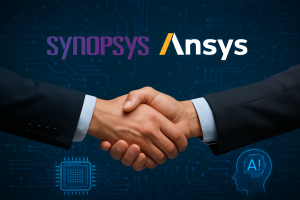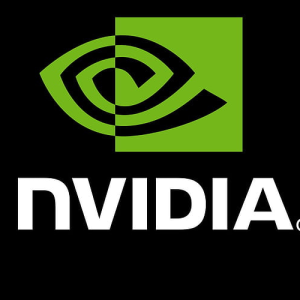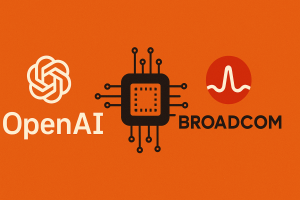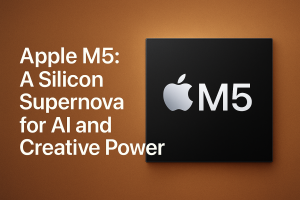"Synopsys–Ansys Merger Faces FTC Oversight to Protect Chip Design Competition"
The divestiture order gave the competition a lifeline so that the innovation isn’t monopolized in the significant technology marketplaces.


The commission claims that the FTC’s proposed divestiture order will preserve competition in several software tool markets that are critical to the design of light simulation devices and semiconductors, which are used in a wide range of products.
The proposed consent decree requires Synopsys and Ansys to complete the divestitures within ten days of the merger completion. The companies must also provide limited transition services and technological support to ensure Keysight Technologies can effectively compete as soon as the divestitures are finished.
The FTC will designate a monitor to oversee the execution of the divestment order to guarantee compliance. In addition, if any firm does not meet the established standards, a divestiture trustee will be appointed.
"Tech the Leap: India’s Road to a $5 Trillion Future"
The $5 trillion dream of India shall be constructed with passion and with innovation—where technology and faith overlap and the citizen enters the epoch of the digital revolution.
From intelligent farms and intelligent cities, the future isn’t coming – it’s being designed.

As India aims to grow into a $5 trillion economy, it will see big changes driven by new ideas and tech. Leading the way in a new age of digital, inclusive, and sustainable growth matters more than just catching up with the rest of the world. In the past decade, projects like Aadhaar and UPI have shown how easy-to-use, safe, and large-scale tech can make people’s lives better. Today, new tech like biotech, 5G, robots, AI, and clean energy are changing industries. We see this in smart farming, AI in healthcare, and online learning reaching rural areas. Real-life examples, such as drones checking crops or small shops doing well through online sales, show how much these changes can do. To fully realize this potential, India must focus on three key priorities:
Digital infrastructure constitutes the economic pillar of support and comprises secure data systems, high-speed internet, and smart city solutions.

"NVIDIA: Powering the Next Wave of AI and Global Technology"
NVIDIA isn’t just propelling the future of AI—but redefining the laws of computing, where machine-driven human language and worldwide innovation and ethical leadership collide.
From gigafactories to genomics, it’s creating the future one smart insight at a time.


NVIDIA, famously known for the dominance of its GPUs, is spearheading the world’s AI revolution. In the recent London Tech Week, its CEO Jensen Huang announced the new programming language is now set to become “human,” i.e., the future when the AI systems and the advanced technology can be governed by the natural discourse and become ubiquitous.
At their center are AI factories—next-gen data centers that take everything from ingestion of the data all the way to deployment in their stride, and making the entire AI lifecycle more efficient. Its hardware roadmap no less ambitious: the Blackwell Ultra (2025), the Vera Rubin (2026), the Rubin Ultra (2027), and the Feynman (2028), each stretching the limits of generative AI performance and energy efficiency.
NVIDIA is expanding worldwide with signature collaborations. In Germany, it’s together constructing a mammoth AI gigafactory with Deutsche Telekom and Brookfield. In Europe, its Jupiter supercomputer powered by GH200 Grace Hopper chips is the fastest and greenest.
On policy, NVIDIA resists so-called GPU “kill switches,” in the tradition of preventing mistrust in U.S. technology. Huang also pushed export licenses in China, even with security debates.
In addition to infrastructure, NVIDIA invests in AI for social good. Its Parabricks platform accelerates genomic science, aiding healthcare innovations. Through innovation, ethics, and worldwide scope, NVIDIA is redefining the world’s building, learning, and connecting through the power of AI.
"Powering the Next Wave of Intelligence—OpenAI Teams Up with Broadcom"
OpenAI’s chip jump with Broadcom represents a daring shift from dependency to design—10 gigawatts of proprietary AI horsepower, designed to scale and designed to own.
The race to AI autonomy just got hardware-deep.

OpenAI and Broadcom announced a groundbreaking partnership with the aim of co-designing 10 gigawatts of bespoke AI accelerators in a significantAI infrastructure shift. OpenAI will, for the first time, design chips and systems in-house and integrate its frontier model insights directly into hardware. The move represents a move toward self-sufficiency while maintaining partnerships with vendors such as Nvidia and AMD.
The clusters are to be designed and delivered in close collaboration with Broadcom, utilizing its Ethernet, PCIe, and optical connect technologies to provide scalable, power-efficient AI clusters. Installation gets underway in the second half of 2026 and finishes up in the fourth quarter of 2029 and covers OpenAI’s sites and partner data centers.
The stock gained over $150 billion in market capitalization after the report, although the executives refuted OpenAI as the $10 billion mystery customer in the previous report. Both CEOs stressed the partnership in developing the artificial general intelligence (AGI) and filling the global AI demand.
Having more than 800 million weekly active users, OpenAI’s surge highlights the need for comprehensive infrastructure. The partnership not only reinforces the market-leading position in AI networking held by Broadcom but also enables OpenAI to innovate the limits of capability, intelligence, and access in AI systems in the interest of all humankind.

"Apple M5: A Silicon Supernova for AI and Creative Power"
Apple’s M5 chip revolutionizes AI performance with in-core Neural Accelerators, incredibly fast GPU compute, and effortless integration between devices.
From creative workstations to spatial computing, M5 powers the next great leap forward in Apple silicon. On-device intelligence begins here.


Apple unveiled the M5 chip, the new M-series chip optimized in AI that was engineered with third-generation 3nm technology. M5 features a next-gen 10-core GPU with in-core Neural Accelerators and features over 4x peak GPU compute and 6x AI performance compared to prior chips. Third-gen ray tracing and improved shader core performance pump up graphics up 45% while enabling smooth playability, faster rendering, and stunning visuals in the apps.
The CPU includes up to 10 cores—six efficiency, four performance—yielding up to 15% faster multithreaded performance versus M4. A 16-core Neural Engine and up to 153GB/s unified memory bandwidth allows on-device AI work, from running large language models to translating 2D photos into Apple Vision Pro’s spatial scenes.
M5 natively supports Apple software technologies such as Metal 4 and Core ML so that their developers can tap its complete AI capabilities. Its up to 32GB memory support lets users access and run resource hungry creative packs such as Adobe Photoshop and Final Cut Pro without any effort.
Coming in the new 14-inch MacBook Pro, iPad Pro, and Apple Vision Pro, M5 represents a new benchmark in performance and efficiency and a quantum leap in AI capabilities—all while being the next Apple silicon generation.
